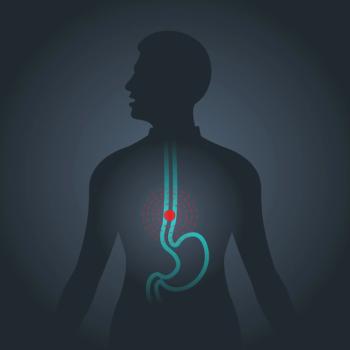
Four Genetic Variants Overwhelmingly Linked to Fluorouracil Toxicity
Current evidence suggests that only four DPYD and TYMS variants should make up the panel of genetic biomarkers for testing for toxicity to capecitabine monotherapy, according to the results of a recent study.
Current evidence suggests that only four DPYD and TYMS variants should make up the panel of genetic biomarkers for testing for toxicity to capecitabine monotherapy, according to the results of a
If the panel included DPYD alleles 2846TA and *2A and the common TYMS polymorphisms 5'VNTR2R/3R and 3'UTR 6bp ins-del, Dan Rosmarin, PhD, of the Wellcome Trust Centre for Human Genetics, NIHR Comprehensive Biomedical Research Centre, University of Oxford, and other QUASAR2 researchers concluded that it would have a 25% sensitivity, 86% specificity, and a 49% positive predictive value. However, even these markers are suboptimal for clinical use for predicting fluorouracil toxicity, they wrote.
QUASAR2 was a phase III trial that randomly assigned patients with stage II/III colorectal cancer to capecitabine plus bevacizumab or capecitabine alone after undergoing resection of their disease. In this analysis, the researchers identified candidate polymorphisms from a systematic review of the literature and tested for associations with capecitabine toxicity in 927 patients from the study.
Of the QUASAR2 patients, 301 developed grade 3 or higher global toxicity. Three polymorphisms were identified as being significantly associated with this grade 3 or higher toxicity: TYMS5'VNTR2R (OR = 1.49), TYMS3'UTR6bp ins (OR = 1.36), and DPYD2849A (OR = 9.35).
Rosmarin and colleagues then took the data from QUASAR2 and combined it with that of 16 other published studies (totalling 4,855 patients) to conduct a meta-analysis.
Results of the meta-analysis supported the conclusions from QUASAR2, but found no evidence of association with other polymorphisms outside of TYMS and DPYD2A identified in the previous study.
“Global capecitabine toxicity (grades 0/1/2 vs grades 3/4/5) was associated with the rare, functional DPYD alleles 2846TA and *2A (combined OR= 5.51; P = .0013) and with the common TYMS polymorphisms 5'VNTR2R/3R and 3'UTR 6bp ins-del (combined OR = 1.31; P =9.4 x 10-6),” the researchers wrote.
None of the tested polymorphisms were linked to toxicity in combination regimens, and there was weaker evidence that any of the biomarkers predicted toxicity from infusional or bolus fluorouracil therapy.
In an
“In order to successfully advance the use of potential genetic biomarkers for predicting fluoropyrimidine toxicity, we must concentrate our investigations on genetic variants demonstrated to have functional consequences, in adequately sized patient populations receiving comparable treatment regimens with uniform collected clinical data,” Lee and Diasio wrote. “Aside from screening for accepted deleterious DPYD variants, the currently marketed genotypic kits have only limited or questionable predictive value, highlighting the fact that even though pharmacogenomic biomarkers have shown great promise, we still have a long road ahead before reaching clinical utility.”
Newsletter
Stay up to date on recent advances in the multidisciplinary approach to cancer.




















































































